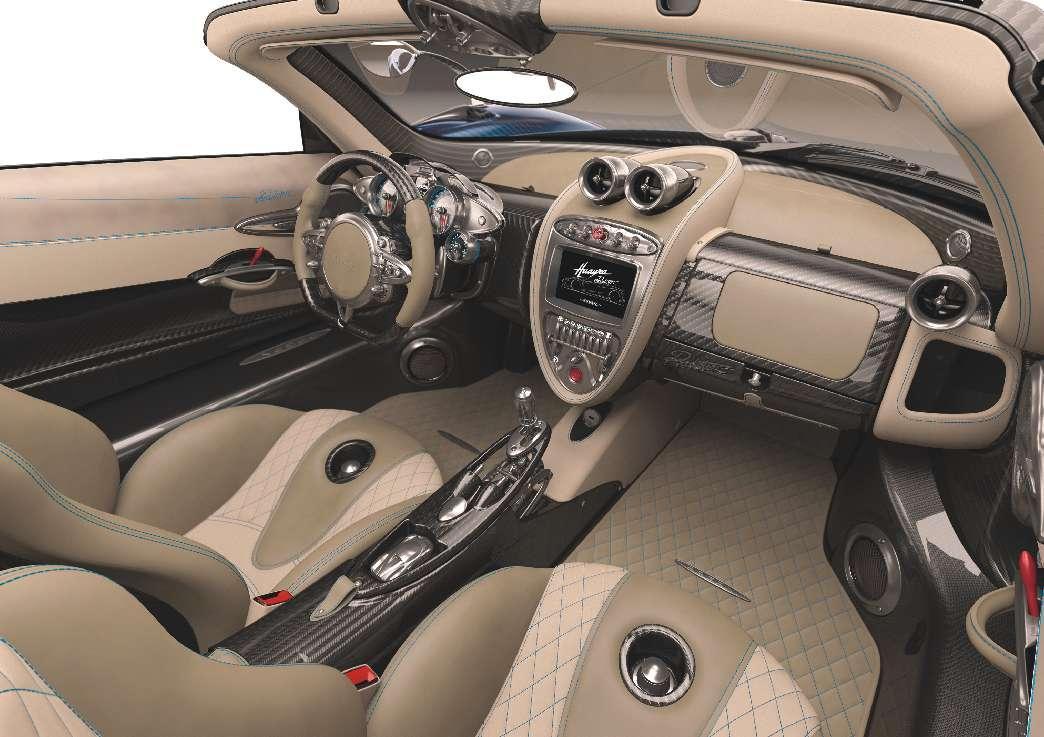
3 minute read
Where the Rebel Meets the Road
Written by Andre James

Pagani’s Huayra Coupe ushered in a new era of hypercars when it was unveiled to the public at the 2011 Geneva Motor Show. An alluring combination of speed and spellbinding aesthetics, the Huayra Coupe, named after Huayra-tata, the “Father of Wind” in Incan culture, raised the bar for a performance-based technology mated with a lightweight build, resulting in the highest lateral acceleration ever seen on a car with road tires. The company launched a Huayra Roadster project in 2010 with the simple intent of creating a Huayra Coupe with a removable roof and conventional doors, as they did for their Zonda Roadster in 2003. Three years into the project, the design was scrapped in favor of creating a car independent of its predecessor and a standout in its own right. “If we think of the Huayra Coupe as a personification of elegance and timeless lines, the Huayra Roadster was to be the rebellious sister, shapely and beautiful, but with a sharp edge for those who are careless,” said Horacio Pagani, the Argentine-born founder of Pagani Automobili S.p.A., which is based in San Cesario sul Panaro, near Modena, Italy.
Formally unveiled this past February at the Geneva Motor Show, every detail of the Coupe has been developed from the ground up with its own unique design language and in direct symmetry with aerodynamic requirements to create a work of art on wheels. The cars skeletal composition, meaning that nearly every mechanical part is visible, sets it apart from most modern supercars, and ensures that even the smallest working component has been designed to be both beautiful and functional.
Two options replace the fixed roof: one is crafted from carbon fiber with a central glass panel to mimic the look of a coupe with the freedom of a convertible, the other is a fabric soft top able to be stored inside the Roadster and installed in “just a few simple steps”.


Traditionally, convertible versions of sports cars are heavier and slightly slower, so creating a Roadster that was lighter than its corresponding Coupe was an ambitious goal for Pagani from the outset of the project. To achieve this, the Pagani engineering team refined the development of carbo-titanium and combined it with Carbo-Triax HP52, a new form of composite material developed specifically for the Huayra Roadster. The result is a 176-pound weight reduction over the Huayra Coupe, and an increase in the frame’s torsional rigidity, which is a significant factor in improving the handling necessary for precise operation of a hypercar such as this. “Engaging in such a challenge, to make just 100 cars, has meant an impressive effort for a company like ours, from a technical, human, and economic point of view,” Pagani stated.
A 12-cylinder Mercedes-AMG M158 engine built specifically for Pagani delivers 754 horsepower at 5500 RPM. Although the company has yet to release an official 0-60mph time, it has been widely reported to be just under three seconds, with a top speed around 230mph, placing the Roadster squarely among the world’s fastest cars. Turbines have been developed to provide an immediate throttle response with no delay, providing the driver

with full control of the vehicle. Power and torque are regulated
by a new seven-speed AMT gearbox that incorporates a hydraulic
and electronic activation system combined with new carbon
synchronizers to deliver seamless, precision shifting. The electronic
differential facilitates adaption to all possible driving conditions.
Since the release of Zonda F in 2006, Pagani cars, in
partnership with Brembo, have attained some of the shortest
recorded stopping distances for 100-0 and 200-0. For the
Huayra Roadster, Brembo developed 380mm ventilated carbon
ceramic rotors that are gripped by six-piston calipers in front
and four-pistons at the rear. To house the brakes, Pagani teamed
up with another motoring industry titan–Pirelli–to design and
sculpt a specific rubber for the Huayra Roadster tires. The new
Pirelli PZero Corsa tires measure 21-inches at the rear and
20-inches up front, and are capable of (according to Pagani)
enabling 1.80g of lateral grip. Developed along with Horacio
Pagani, the tire displays an “HP” logo on its shoulder.
It seems that even with a base price of approximately $2.5
million, getting your hands on a Huayra Roadster means acting as







